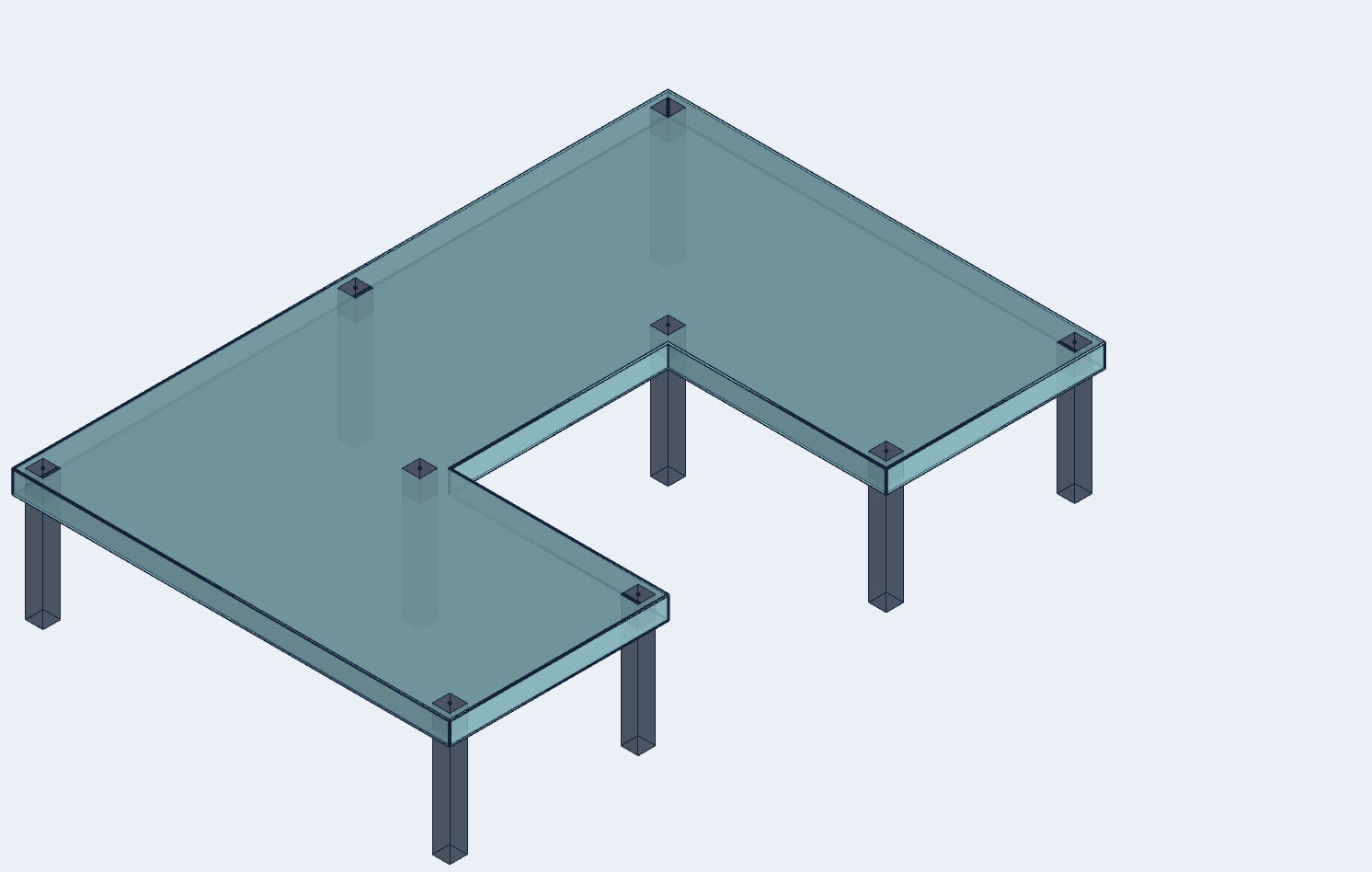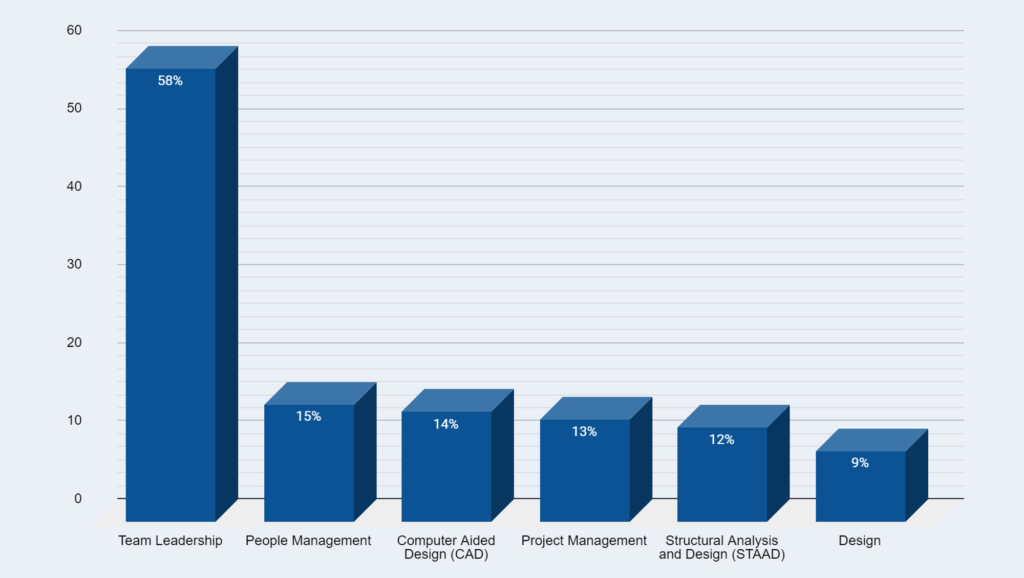Are you eager to learn all about a structural engineer salary? Join us as we share all the details about what you can expect to get paid.
Background
In general, the structural engineer salary will depend on different aspects such as location and seniority level.
Also, the industry where the structural engineer works like construction, aeronautical, or oil and gas will have an important influence.
For example, the average base salary in the United States is $109,511 per year according to the Economic Research Institute.
Now, let us show you the details we promised. Keep reading so you can learn the possible differences of a structural engineer salary and the different aspects creating those gaps.
How location influence the structural engineer salary
We already mentioned that the average structural engineer salary in the United States is $109,511 per year. However, when we move to another country such as India, the average compensation changes. In short, the salary in this country is ₹485,888 (Indian Rupee) which represents about 6,370 US dollars, according to expert website payscale.com.
Clearly, the gap is amazing from one country to the other. But, what is also amazing is that the average salary gaps can also be found within the same country.
So, taking the example of the United States, different locations in the country will offer different amounts of money as the average structural engineer salary. Now, here are some examples of the average structural engineer salary in each state.
| State | Average Salary (per year) |
| California | $101,539 |
| Florida | $70,842 |
| Kansas | $56,749 |
Further, to give you a more general view of how the average structural engineer salary can vary around the world, here are some examples in different countries.
| Country | Average Salary (per year) |
| Australia | $130,180 (AUD) ≈ $95,575 (USD) |
| Canada | $113,132 (CAD) ≈ $88,250 (USD) |
| United Kingdom | £58,246 (GBP) ≈ $76,708 (USD) |
How skills influence the structural engineer salary
To clarify, you may already know that a structural engineer is in charge of creating drawings, performing calculations, reviewing the work of other engineers and writing reports and evaluations, among other tasks.
However, we want to make clear all these are necessary to make useful and attractive structures a reality, including but not limited to:
- Residential and commercial buildings.
- Hospitals.
- Power plants and other industrial buildings.
- Universities.
- Airports.
- Seaports.
- Oil rigs.
- Bridges.
- Space stations.
- Special structures.
As a result, structural engineers will be required to manage very specific skills.
Also, the more experience they have applying such skills the higher the responsibility and the salary they can expect.
For example, the experts in payscale.com mention that popular skills involve engineering design and Finite Element Analysis (FEA).
Of course, employers may expect the structural engineer to manage different tools. This is because those will help them improve the efficiency and accuracy when applying these skills.
For example, Tribby3d, a simple yet powerful cloud-based structural engineering software for computing tributary areas of column and wall elements could be among those tools.
Average Salary Increase
In the same vein, according to research performed by payscale.com, here are the different skills and their effect on the average structural engineer salary:
Below you see the same data represented as a table:
| Skill | Average Salary Increase |
| Team Leadership | 58% |
| People Management | 15% |
| Computer Aided Design (CAD) | 14% |
| Project Management | 13% |
| Structural Analysis and Design (STAAD) | 12% |
| Design | 9% |
Meanwhile, having the knowledge around these skills may not be the only way to increase the possibilities for a higher salary.
For instance, the structural engineer salary is also affected by the level of seniority. In other words, how much experience the engineer has using that knowledge.
So, let’s now take a look at the influence of experience.
Did you like this post? Sign up and we’ll send you more awesome posts like this every month.
Impact of seniority level
Above all, according to the Economic Research Institute, the average structural engineer salary in the United States ranges from $76,982 at entry-level to $135,917 at senior level.
In addition, the experts in salary.com provide more detailed data for levels based on data obtained as of February 25, 2022.
Firstly, they suggest that a structural engineer I can expect to make something between $56,284 and $72,721 in the United States. A structural engineer II should make between $78,583 and $93,932.
Then, in the higher levels, a structural engineer III should earn between $90,119 and $113,207, and a structural engineer IV between $101,716 and $123,767.
However, it is important to highlight that the experts also suggest that these ranges are variable.
Therefore, they say the ranges depend on many factors including certifications and additional skills, just as we have explained before.
Moreover, salaries may vary depending on some extras that may be offered by different employers.
Finally, according to payscale.com the structural engineer salary usually goes with a bonus in the range of $990 to $10,000 and some employers may pay commissions up to $5,000.
The future of the structural engineer salary
Clearly, the work of the structural engineer is one that will be needed for many years to come.
Moreover, with the strict requirements on the construction industry to make buildings greener and more efficient, structural engineers can expect to have a lot of work in the future.
In addition, the industry is expected to keep growing, so we can expect the same to happen for the structural engineer salary.
To illustrate, based on a study by the Economic Research Institute, the average structural engineer salary should see an increase of 18% in five years, reaching $129,437 by 2027.
Clearly, we can expect to see the application of new technologies in the future too.
So, if you are a structural engineer and you want to see your future salary improved, you should start taking a step forward to improve the efficiency of your work.
For instance, if you want to boost your skills in order to improve your prospects to obtain a better salary, you should definitely check Tribby3d. It will power the efficiency of your daily tasks.
So, if you’re interested in testing the free beta version of Tribby3d and calculate irregular tributary areas, please sign up here: https://tribby3d.com/sign-up
You can also test an open version of Tribby3d here, without the requirement to sign-up: Free Tributary Area Calculator.



